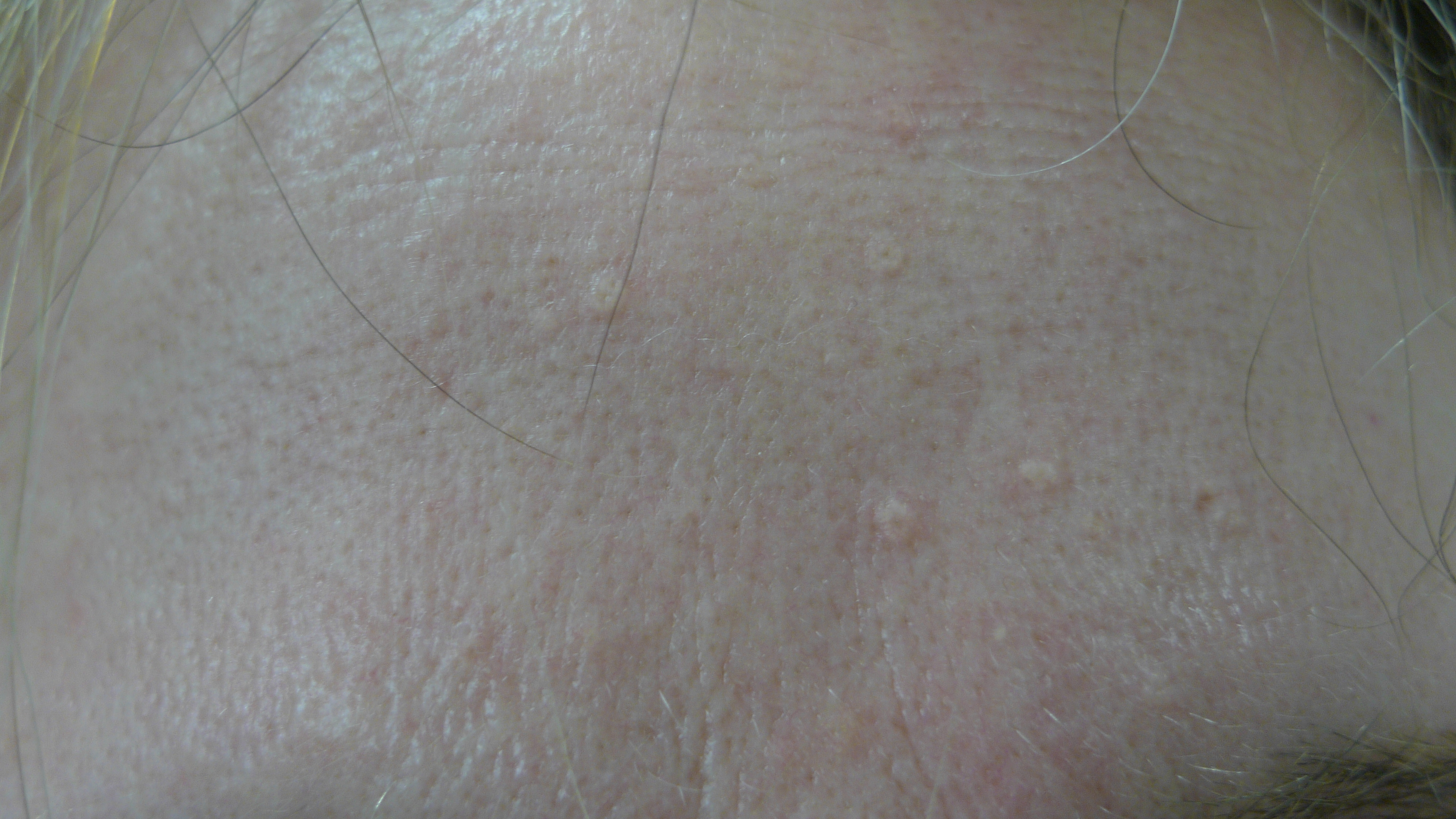Sebaceous hyperplasia
Also known as senile sebaceous hyperplasia
What is it?
Sebaceous hyperplasia is a benign growth of the sebaceous (oil) glands. It most commonly occurs in middle-aged or older people. It presents as single or multiple yellowish white bumps on the forehead, cheeks and nose. These bumps can occasionally occur on other areas such as the areola (near the nipples), chest, scrotum and penis.


In some cases the condition can be seen in newborns on the nose, upper lip and forehead due to the mother’s hormones. Very rarely, these spots can be seen in other inherited skin conditions.
What causes it?
The exact cause of sebaceous hyperplasia is not known. It is thought to be associated with changes in circulating androgen hormones as a person ages.
What does it look like?
Sebaceous hyperplasia appears as small whitish-yellow bumps, 1 to 3 mm in diameter. The bumps have a centrally placed tiny pit and, in some cases, visible blood vessels. The central pit is surrounded by white-yellow tiny lumps. They are soft to touch. Sebaceous hyperplasia tends to persist without treatment.
What other problems can occur with this condition?
Sebaceous gland hyperplasia is usually associated with oily skin. It is also seen in Muir-Torre syndrome (a rare inherited condition). In some cases, the condition can mimic other growths, including skin cancers.
How is it diagnosed?
No investigations are usually needed. In some cases, a biopsy is needed to exclude basal cell carcinoma.
How is sebaceous hyperplasia treated?
Sebaceous hyperplasia is a benign condition and no treatment is required. If it is bothering a person, it can be treated with physical methods such as cryotherapy, light cautery, fine wire diathermy, laser ablation, shave or surgical excision. However, all these treatments carry a risk of scarring and dyspigmentation (discolouration). Creams and topical therapies are usually not helpful. Severe and extensive cases may be treated with oral isotretinoin (vitamin A medicine that dries up the oil glands) and antiandrogens (in females).
What is the likely outcome of this condition?
Sebaceous hyperplasia tends to persist for many years. It does not grow into skin cancer.
This information has been written by Dr Antoinette Ciconte and Dr Daniel Hewitt
Last updated 16/03/2017